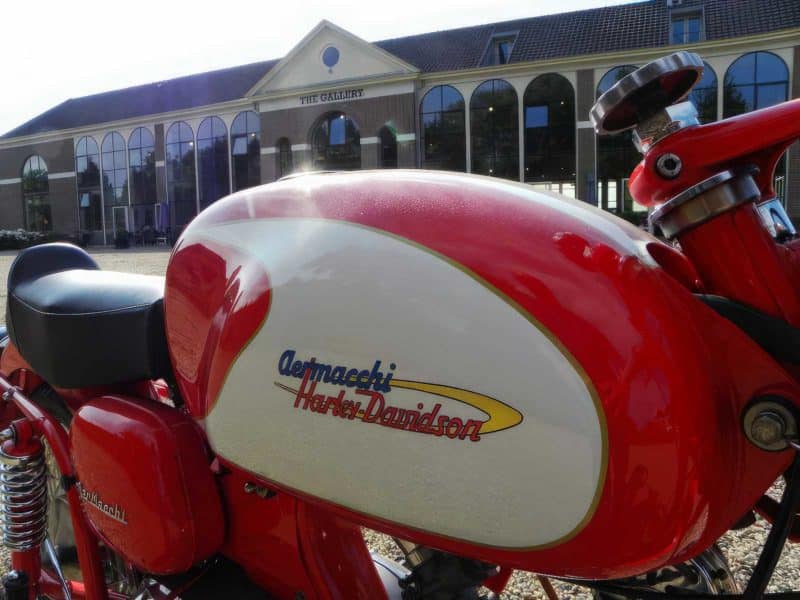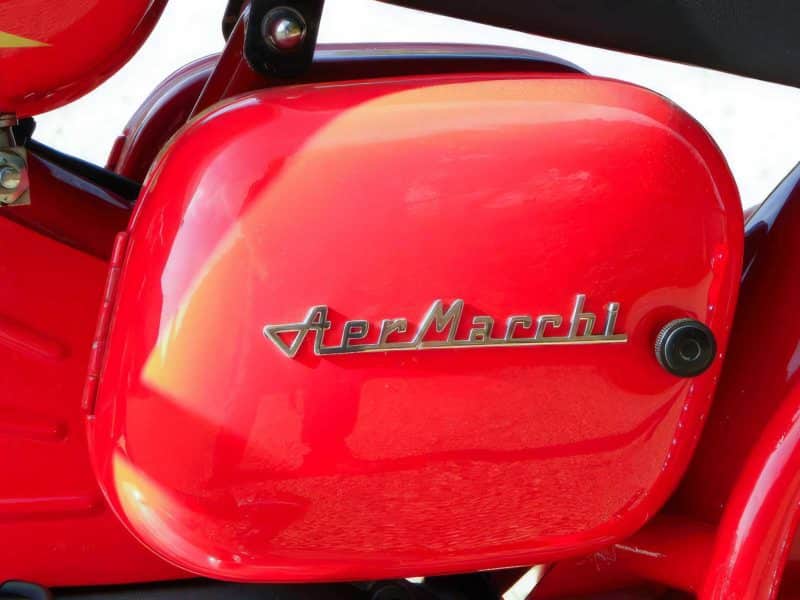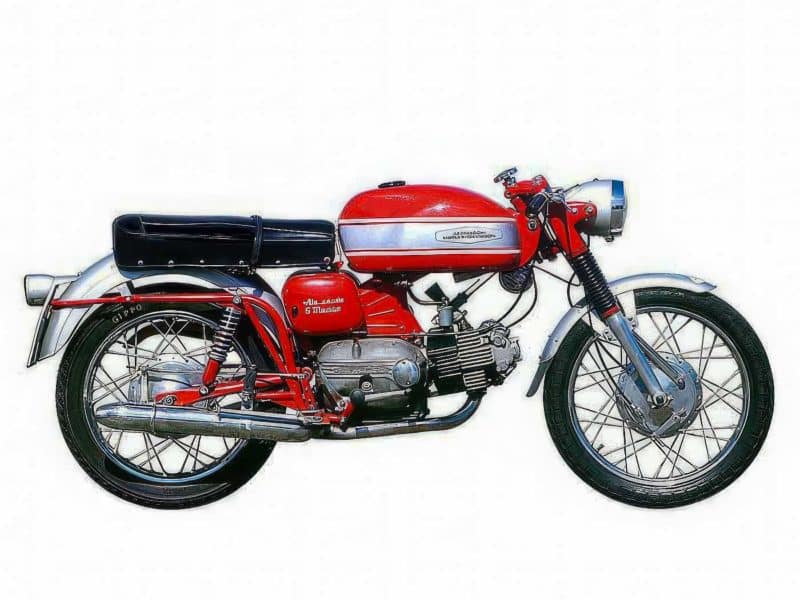'Ala' means wing. Birds have wings and can fly. They are also fast… People used to be significantly smaller than they are now. And in the 1,65s and 250s, an adult Italian man of XNUMX meters was seen as a representative Southern European. This explains the dimensions of the beautiful Aermacchi motorcycles. In the XNUMXs, aircraft manufacturer Aeronautica Macchi dived into the emerging market for mass motorization and began producing scooters and later motorcycles. Like the Aermacchi Ala Verde XNUMX.
Due to the shares bought by the American Harley-Davidson brand in the 1971s and eventually the acquisition of the Italian company, the motorcycles became known as “Aermacchi-Harley-Davidson” and eventually as “Harley-Davidson”. In XNUMX AMF took over Harley and the Aermacchi-Harley-Davidsons became AMF/Harley-Davidsons. The takeover of power by the Americans was not bad for Aermacchi at that time. The Italians had to deal with a lack of space because they had to share the factory with their colleagues who produced aircraft. With more space, more motorcycles could be produced. And that part of it went to the United States? “Nessun problema!” The marriage of convenience naturally failed because of the inequality between the participants and the difference in passion between the Italians and the Americans.
Aermacchi Ala d'Oro and Ala Verde
(1960-1968) After the introduction of the Aermacchi Ala d'Oro and the Aermacchi Ala Verde, Aermacchi motorcycles were highly sought after as amateur racing motorcycles and in national competitions. Aermacchi's appeared at the start all over Europe. The Aermacchi Ala Verde was the sporty version of the touristic Ala Azzurra. Like the Chimera, the Ala Verde had an air-cooled single-cylinder overhead valve engine with pushrods. The cylinder of the engine block was almost flat for an optimal center of gravity and ideal cooling. A multi-plate wet clutch was located at the left end of the crankshaft and the primary transmission to the four-speed gearbox was via gears. The gearbox was switchable in the beginning with the heel-toe method on the left side. The engine breathed through a Ø 24mm Dell'Orto carburetor and the fuel tank had a capacity of 17 litres. The motorcycle had a backbone frame with a central tube and a telescopic fork mounted at the front. At the rear there was a normal swingarm with two spring/damper elements.
The first update
In 1963 a serious update took place. The lubrication system was improved and an optional five-speed transmission became available. The clutch was made heavier, the electrical installation was improved and the front fork became stronger. The steering wheel, side panels and exhaust have also been redesigned. For the 1964 model year, the new shorter-stroke engine was introduced. In 1967 new changes followed on the tank, the fenders, the passenger seat, the headlight and the front fork. The wheels, which had been 17 inches on all "customer bikes" up to that point, were replaced by 18 inch ones. This was the most convenient solution to the problem experienced riders had noticed: the heel-toe pedal limited ground clearance when cornering. The fact that this caused the motorcycle to steer a little less lively was not really noticed by anyone at the time.
End of story
The last change took place in 1970, again fitting a new tank to the Aermacchi Ala Verde and revamping the electrical controls. Power increased to 18 hp and fifth gear now became standard. The front wheel got even bigger and grew to 19 inches.
In July 1972, production of the Aermacchi Ala Verde 250 was discontinued. The new “sporty” Aermacchi became the TV (“Turismo Veloce”) 350.
In the meantime, all those Aermacchi motorcycles have become highly sought after classics. So if you still have a dusty copy in the shed…











I gave the one in the photos a neighborhood last winter. Motor runs like a charm.
250 cc and 18 HP sporty bikes. . . .
Come on now
Indeed, 250cc and 18 hp were once 'sporty'. The Italian optimism at the stated top speeds of such things still surprises me. But hey, boohhh! If it drives well with a block that runs like a charm, it's all right of course. Times change and techniques improve. Now with a 250cc you just get to 30hp or so. At least for the simpler bikes. The Moto3 bikes nowadays with their 250cc are every 60 hp at a rock-hard 14.000 rpm, so I read. Such a block in a small and feather-light frame spooned under the ass of pilots who seem to suffer categorically from dwarfism and anorexia (but not really of course) drag those things like the fire brigade towards 230-240 km / h. Whether the characteristic of such a tour de force lends itself to civil driving around is very much the question of course 😬 My view of sporty is also something different than 18 hp. But I challenge them, those who manage to keep those same few horses going full throttle. That makes you a good driver on winding roads, even if 18hp on the drag strip isn't much. So there are quite a bit of sportsmanship on the plate in one go. And yes, I think this little Italian is stunning. The mechanic did a very good job!